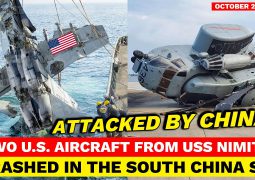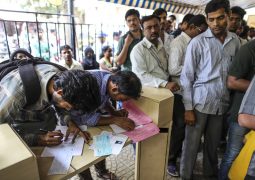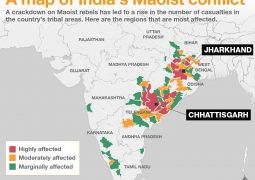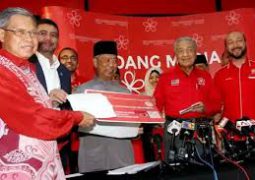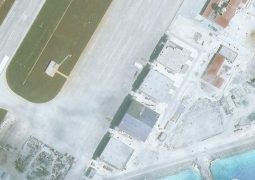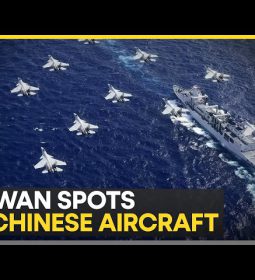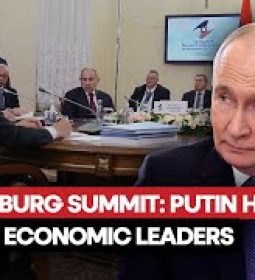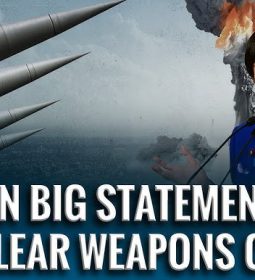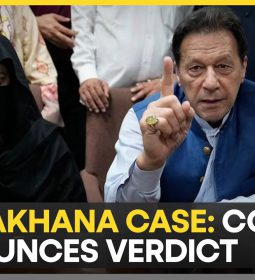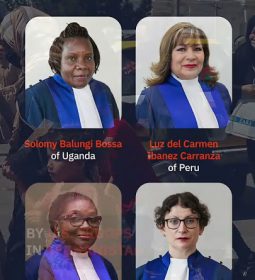China-Hong Kong bridge to unity, or tentacle of Beijing control?

As a 19-mile bridge between Hong Kong and China across the Pearl River estuary nears completion, Chinese officials are hoping it will bring more than economic integration at a time of growing tension between the two sides.
The bridge that snakes out over the blue estuary with soaring pylons, viaducts and towers using more steel than 60 Eiffel Towers, was first proposed in the late 1980s.
But it was opposed at the time by Hong Kong’s British colonial government, which was wary of development that might draw the city closer to Communist China.
Since Hong Kong returned to Chinese rule in 1997, however, there has been a flurry of projects integrating the port city with the Pearl River Delta’s manufacturing and urban sprawl, and stoking some unease in Hong Kong.
Wei Dongqing, a Chinese Party official and the executive director of the Hong Kong Zhuhai Macau bridge Authority, one of the leaders of the project, sees the bridge, linking the former European colonies of Hong Kong and Macau with Zhuhai city, as promoting unity, both physically and mentally.
“It’s psychological. It joins three places,” Wei told Reuters on a media-trip bus speeding along the half-finished, six-lane bridge, with the facades of Macau’s casinos glimmering in the distance.
“We have confidence for the future … a united market, a united people … that’s the dream.”
After nearly eight years of construction, the cost of the bridge and tunnel project has ballooned to some $19 billion, at the last estimate.
Critics see it as a white elephant, that will struggle to become viable and be unlikely to draw the 40,000 or so vehicles a day as forecast.
While most construction is expected to be finished by year-end to allow the first vehicles to cross, Wei said he “wasn’t sure” when full operations – including toll booths, customs and immigration facilities – would be ready.
“We are facing new challenges after the bridge is completed … how to operate it, make it efficient, and really benefit the whole area,” he said.
The Hong Kong Transport Bureau, which oversees the Hong Kong end of the project, gave no specific response to questions on whether more delays and cost-overruns were expected, but said it was confident construction could be completed by the end of the year.
Final arrangements were being decided by the three sides, it said in an email.
(To view a map of Hong Kong Zhuhai Macau bridge, click tmsnrt.rs/2pZ0YNU)
‘BLUR THE BORDER’
Mainland and Hong Kong officials have long stressed the bridge’s economic importance at a time when tension in Hong Kong has escalated, with protests in 2014 over Beijing’s refusal to allow full democracy, and suspicion of creeping mainland interference despite a guarantee of autonomy.
Some in Hong Kong, apart from questioning the huge sums that could have gone into health, housing and education, are worried about what they see as an erosion of Hong Kong’s independent identity in China’s increasingly extensive embrace.
“You see a kind of network trying to blur the border between Hong Kong and China,” said pro-democracy lawmaker Kwok Ka-ki.
“In the coming 10 to 15 years, when all these infrastructure projects are completed, you will see Hong Kong is only part of China because you cannot see a clear border.”
Another project – a multi-billion dollar high-speed rail link – sparked an outcry over plans to allow Chinese immigration facilities to operate on Hong Kong soil.
Critics say that undermines Hong Kong’s autonomy under a “one country, two systems” formula, under which the city returned to Chinese rule.
“I don’t think many Hong Kong people mind to be integrated … but what we want is to do it democratically,” said Eddie Chu, who led protests against the rail link and is now an elected lawmaker.
“Behind all the protests in the last 10 to 15 years, the core idea is democracy and it’s an extension of the democratic movement, whether we have popular control over the direction of economic development and town planning.”
But project leader Wei, dressed in gray overalls and a white hard-hat, celebrates the integration that the critics decry.
“It’s actually one bridge, three systems. It’s about the law, policy, transportation policy, customs policy,” said Wei.
“The bridge is becoming a new icon.”
(Additional reporting by Venus Wu; Editing by Robert Birsel)
- Previous The Remarkable 100-Year Journey Of Malaysia’s “Golden Crop”
- Next New ferry links North Korea and Russia despite U.S. calls for isolation



